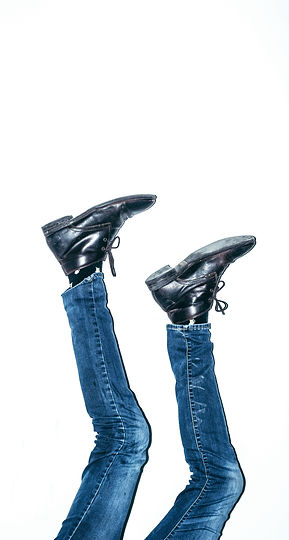Pain & Injury Clinic, Spalding


HELP FOR LEG LENGTH DISCREPANCY IN LINCOLNSHIRE
Leg length discrepancy - where one leg is longer than the other - is extremely common. Many people get told (especially by massage therapists, osteopaths and chiropractors) that they have a leg length discrepancy, and that this is the case of their back, hip or leg pain.
500+ 5 star reviews
DO YOU HAVE ONE LEG LONGER THAN THE OTHER? IS LEG LENGTH DISCREPANCY THE CAUSE OF YOUR BACK, HIP OR LEG PAIN?
Content written by Greg Pritchard, RAPID NeuroFascial Reset Specialist, BTEC Level 5 Soft Tissue Therapist (CSSM), MFHT

Many people are told that they have one leg longer than the other, and that this is the cause of their back, leg or foot pain.
There has been a resurgence in therapists, including massage therapists, osteopaths and chiropractors, telling clients that one of their legs is longer than the other and this is why they are in pain.
Many people become very worried by this idea that they are somehow "disabled" or "deformed" because their legs are not of equal length. Sometimes people even consider limb lengthening surgery to lengthen the shorter leg.
COULD ONE OF YOUR LEGS BE LONGER THAN THE OTHER?
It's estimated that anywhere between 40% to 70% of people have Leg Length Discrepancy - the medical term for having one leg longer than the other.
Other sources estimate that only 10% of people have legs that are the same length (which would mean 90% of people have Leg Length Discrepancy).
Perhaps the most famous person with a leg length discrepancy is Usain Bolt, the fastest sprinter in history. His leg length discrepancy is the result of scoliosis; he has a leg length discrepancy of 13mm (1.3 cm). Given Mr Bolt's athletic achievements, it's safe to say that his leg length discrepancy isn't causing him any issues!

ANATOMICAL LEG LENGTH DISCREPANCY

Did you know there are two types of leg length discrepancy?
The first type of leg length discrepancy is called "anatomical leg length discrepancy" and is to do with actual bone length, and is either present at birth (a developmental abnormality) or occurs at some point later in life, perhaps due to a traumatic injury, joint replacement or degenerative condition.
In these cases, a specialist will be the person telling you that you have a leg length discrepancy. It is very unlikely that you would have a leg length discrepancy that cures you any issues but not know about it until some kind of therapist tells you about it in your 40s!
Anatomical leg length discrepancy is difficult to diagnose outside of a specialist medical environment. Some therapists will attempt to use a tape measure but this is notoriously unreliable (and open to abuse by unscrupulous therapists). Another way of "measuring" anatomical leg length discrepancy is by locating bony areas on the pelvis by hand and seeing if they are "level" across the body. This again can be very unreliable as hands are not that accurate!
FUNCTIONAL LEG LENGTH DISCREPANCY
The second type of leg length discrepancy is known as functional leg length discrepancy. This type of leg length discrepancy occurs when both legs are the same length, but the person holds themselves in a way to mean that the legs are no longer symmetrical. An obvious example of this would be if someone positions themselves when they stand in such a way to move their hips or roll their ankle in order to make one leg functionally longer (or shorter!) than the other.
Functional leg length discrepancy could be thought of as a posture based issue, and is generally caused by either habitual issues or an injury. Resolving this issue will generally resolve the functional leg length discrepancy.
CAN A LEG LENGTH DISCREPANCY CAUSE PAIN?
Although it can seem obvious to suggest that having one leg longer than would lead to pain, this is not actually known to be the case. Most people have one leg longer than the other, but are not in pain, and when people have back pain, it is not constant, whilst their leg length remains the same.
Studies into leg length discrepancy and back pain are inconclusive, and don't show whether leg length discrepancy causes back pain, or whether people with back pain have leg length discrepancy anyway.
In short, there is no real evidence for leg length discrepancy being the cause of back or leg pain, and any claims that leg length discrepancy is the cause of your issues (and that you just need 10, 20 or 40 treatments to fix it) should be treated with scepticism (unless you've been told by a medical specialist, rather than Charlie the Chiropractor).
WHAT OUR CLIENTS SAY: REAL REVIEWS FROM PEOPLE LIKE YOU!
Melissa says: "I've been to Greg 3 times over the last 18 months, he always puts me at ease, cures my aches and pains and in my back and makes me laugh with his humour. I never feel pressured to make more appointments and he always gives great advice on exercises and prevention of further injury."
Stef says: "I've just been to see Greg and already feel so much better - after just one session! Truly amazing and obviously knows what he's doing, he even managed to get some movement out of my hips! A really lovely, normal, down to earth chap who is passionate about his craft and is now on my "regulars" list. Thank you, Greg, see you soon.."
Jay says: "I arrived not being able to move my neck at all. Greg was awesome, he just keeps talking and before you know it you can move again... I felt rough for a couple of days then better than I have in such a long time!"


